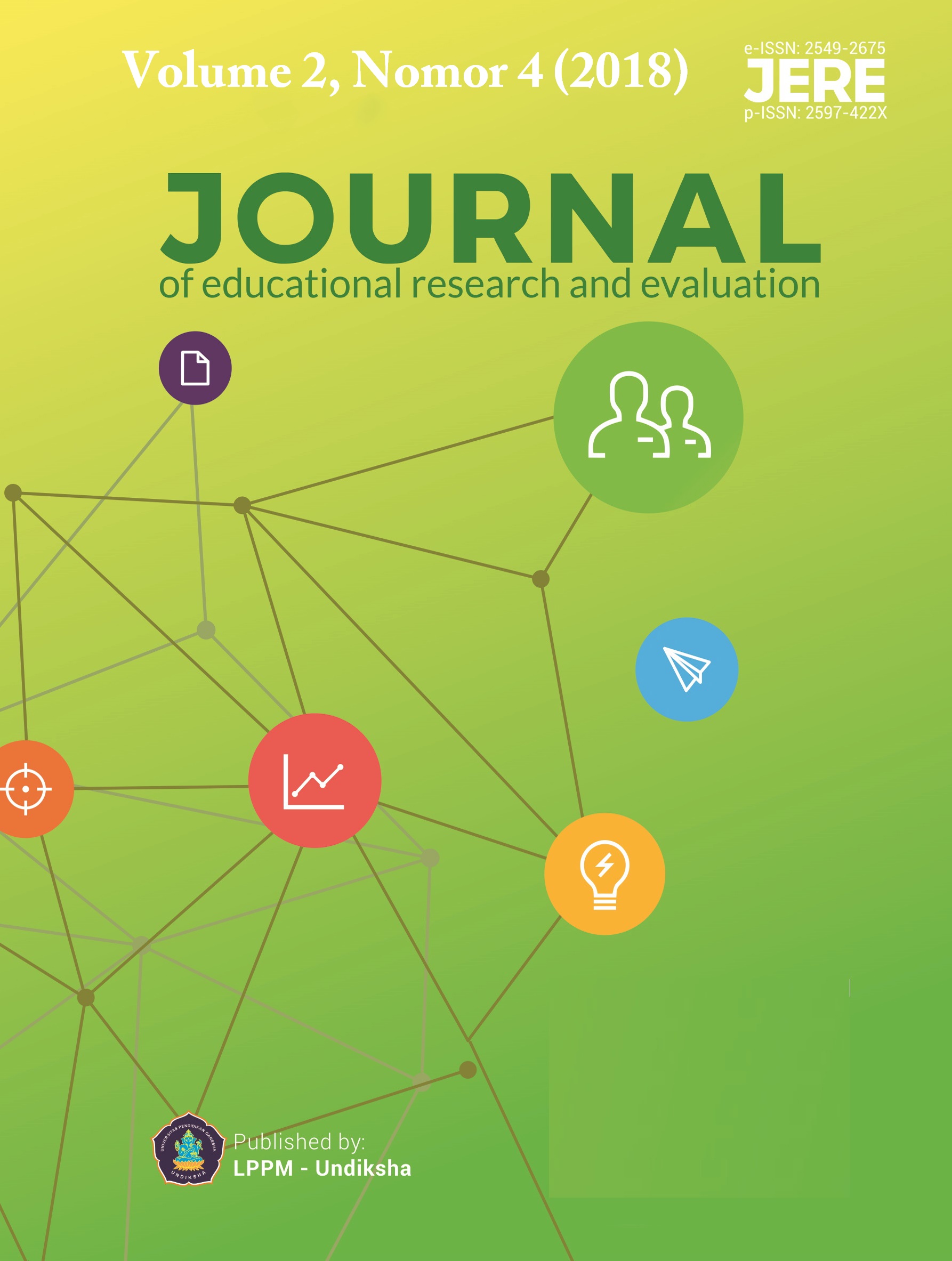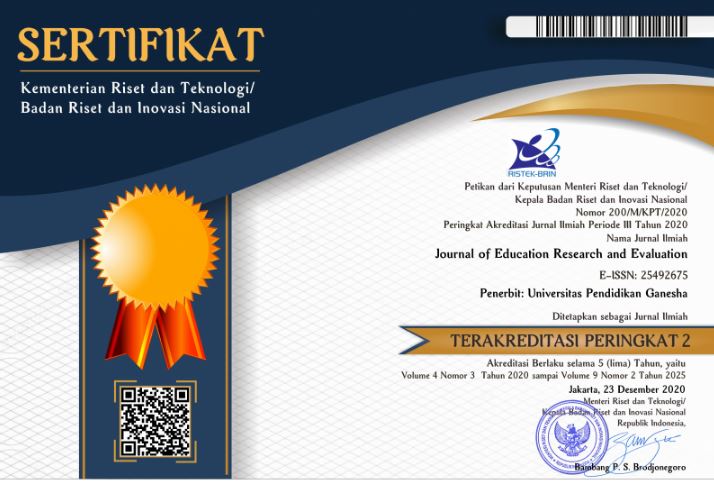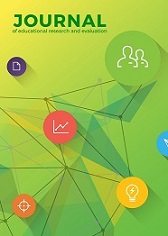The Development of Teaching Materials with Mind Mapping Methods Literary Literacy Oriented and Character Education to Improve Understanding of Literary History
DOI:
https://doi.org/10.23887/jere.v2i4.16102Keywords:
teaching materials, mind mapping, literary literacy, and character educationAbstract
This study aims to develop teaching materials using mind mapping method oriented to literary and character education in a valid, practical, and effective Literature History course. There are three aspects that used to measure the instructional material developed, namely: 1) the content of teaching materials validity will be assessed by experts that adjusted to the supporting theory while construct validity is assessed by experts by paying attention to the relevance and suitability of the developed teaching materials; 2) practicality of the developed teaching material is measured by its implementation in lectures in class by using the instrument of questionnaire responses of students and lecturers; 3) effectiveness of instructional materials was measured using multiple choice tests. The development of this teaching material follows the procedure for product development from Plomp, namely: 1) initial investigation, 2) design, 3) realization/ construction, 4) test, evaluation, and revision; and 5) implementation. Given the time constraints, this study did not arrive at the implementation stage but only arrived at limited trials. From the results of the study, the instructional material developed has met the criteria of valid, practical, and effective. Whereas from the results of limited trials, the instructional material developed effectively increases the understanding of Literature History in PBSI semester I students in the academic year 2018-2019. This is evident by increasing of the percentage of students getting B +, A-, that is 62% in the first cycle become 80% in second cycle. It is already above the percentage that have been achieved and even exceeding the target, that is 70% of students get B +, A-, and A in the beginning of study.References
Buzan, T. 2010. Buku Pintar Mind Map. Jakarta: PT Gramedia Pustaka Utama.
Devi, R.S, dkk. 2015. Efektivitas Metode Mind Mapping terhadap Peningkatan Pemahaman Konsep Siswa pada Mata Pelajaran IPA. Jurnal Antologi UPI. 3 (2):1-8.
Haryadi. (2011). Peran Sastra dalam Pembentukan Karakter Bangsa. Retrieved from staff.uny.ac.id/sites/.../Peranan Sastra dalam Pendidikan Karakter.doc
Kemendikbud. (2016). Panduan gerakan literasi sekolah di sekolah dasar. (P. . P. Pangesti Wiedarti, M.Appl.Ling. & D. Kisyani-Laksono, Eds.), Direktorat Pembinaan Sekolah Dasar Direktorat Jenderal Pendidikan Dasar dan Menengah Kementerian Pendidikan dan Kebudayaan. Jakarta. Retrieved from http://repositori.perpustakaan.kemdikbud.go.id/40/1/Panduan-Gerakan-Literasi-Sekolah-di-SD.pdf.
Kementerian Pendidikan Nasional. 2011. Panduan Pelaksanaan Pendidikan Karakter. Jakarta:Pusat Kurikulum.
Plomp, T. 1997. Educational And Training System Design. Enschede: University of Twente, Faculty of Educational Science and Technology.
Rismawati. (2017). Perkembangan Sejarah Sastra Indonesia. Aceh: Bina Karya Akademika.
Smith, J., Clark, A., & Conroy, C. (2013). Mind mapping. In Fire Risk Management (pp. 42–46). https://doi.org/10.1007/978-3-8349-4691-1_55
Wulandari, R. A. (2015). Sastra dalam Pembentukan Karakter Siswa. Jurnal Edukasi Kultura, 2(2), 63–73. Retrieved from http://jurnal.unimed.ac.id/2012/index.php/kultura/article/download/5181/4613
Wibowo. A. 2013. Pendidikan Karakter di Perguruan Tinggi. Yogyakarta:Pustaka Pelajar.
Downloads
Published
How to Cite
Issue
Section
License
Authors who publish with the Journal of Evaluation and Research in Education (JERE) agree to the following terms:
- Authors retain copyright and grant the journal the right of first publication with the work simultaneously licensed under a Creative Commons Attribution License (CC BY-SA 4.0) that allows others to share the work with an acknowledgment of the work's authorship and initial publication in this journal.
- Authors are able to enter into separate, additional contractual arrangements for the non-exclusive distribution of the journal's published version of the work (e.g., post it to an institutional repository or publish it in a book), with an acknowledgment of its initial publication in this journal.
- Authors are permitted and encouraged to post their work online (e.g., in institutional repositories or on their website) prior to and during the submission process, as it can lead to productive exchanges, as well as earlier and greater citation of published work. (See The Effect of Open Access)











